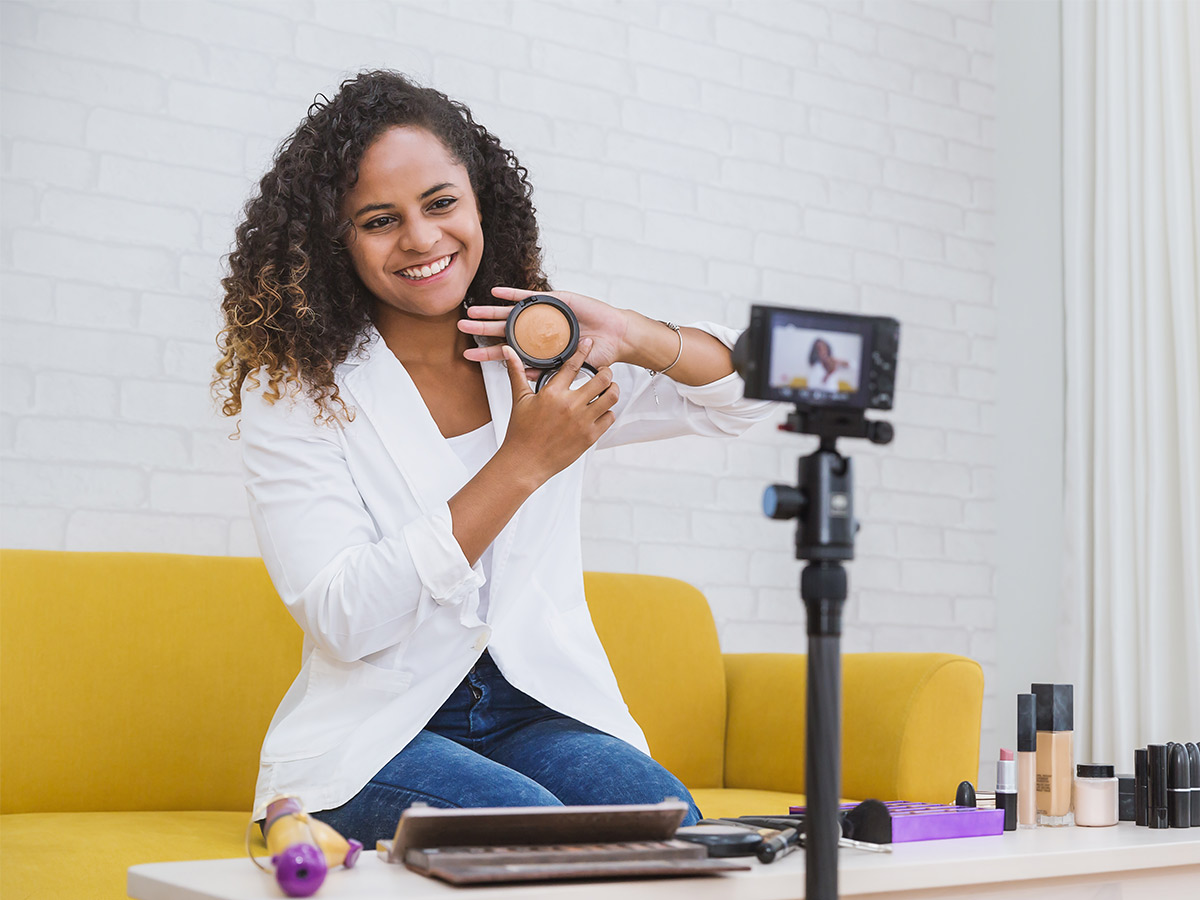The new normal is upon us – and with it, a massive downturn in retail spending and resultantly, advertising rates.
Global advertising spending is forecast to drop more than 10%, or $63bn, this year, according to Warc, with the market taking more than two years to recover to pre-pandemic levels. But those catastrophic numbers hide significantly different shifts in the sands: while advertising on linear TV took a 16% hit, down to just under $30bn globally in 2020, online advertising was spared from the brunt of the impact, dropping just 0.3%. And online video is believed to have increased.
But the insulation social media marketing and online advertising has seen from the worst effects of the pandemic doesn’t mean there can be complacency in the industry. “The pandemic has caused an unprecedented shift,” says Anthony Capano, managing director, international, at Rakuten Advertising. “I think we overuse unprecedented, but I can’t think of a better word. It’s had a big shift in consumer behaviour. Online sales are booming and that’s fuelled competition. Brands need to work a lot smarter in making their budgets go further during the pandemic.”
We are all social animals
They also need to do so under more scrutiny than ever before. “The pandemic significantly increased the amount of time people spend online, with Ofcom reporting that people spent 36% more time on social media during lockdown,” says Aaron Goldman, chief marketing officer at Mediaocean. “It also impacted the amount of money brands spend on digital and social media,” he added. Advertisers who used Mediaocean’s Scope platform increased their budgets as much as 40% year-on-year in recent months across channels like Facebook, Twitter, Snap, Pinterest, and LinkedIn.
The reason is simple: we’re spending more time looking for diversions from the doom and gloom around us, and that means more time on social media. In March 2020, TikTok users spent more time on the app in a single month than there has been time between the Stone Age and today – an indication of the captive, eager audience marketers can try to lure through smart advertising on social platforms.
In all, more than 180 million people started to use social media between July and September 2020, equating to growth of almost two million new users every day, according to Mary Keane-Dawson, group CEO at Takumi, an influencer marketing agency. And those new users were engaging with content created by influencers on social media platforms designed to get them spending at a time when physical shops were closed, and traditional brands were struggling to attract eyeballs.
“National lockdowns and social distancing restrictions meant that, at the height of the pandemic, marketers were unable to conduct pre-planned shoots for ATL campaigns and OOH advertising,” says Keane-Dawson. “Social media and digital marketing became invaluable for brands trying to target consumers who were stuck at home and only reachable via their screens. We saw marketers adapting their ad strategies and begin to engage influencers more than ever before. As the most qualified to create high-quality, hyper-targeted content from within their own homes, they were the obvious solution.”
The speed at which things could change suited social media and online advertising more than traditional methods. “Social and digital channels have become more important during the pandemic because they allow brands to optimise their ad spend in real-time,” says Goldman. “Channels like TV and print require lots of advance planning and it’s not as easy to make agile shifts in strategy and budget. As markets open and close based on COVID-19 trends, social and digital allow brands to quickly adjust messaging and stay in sync with consumer sentiment.”
Social – the new normal
It was a confluence of events that triggered massive change in a matter of weeks. But as with so much of our post-COVID-19 world, what we first thought of as small, temporary changes to deal with the realities of the pandemic could rapidly become the new normal. “Social media remains an important place for brands to reach consumers, even more so during these times as more consumers are consuming social media,” says Capano. “Initially we saw it as them looking for entertainment at home. But as they looked for entertainment, their eyeballs increased further on social media platforms.”
The rise of integrated e-commerce, made popular through Instagram’s shop now functionality and recently reinvigorated with TikTok’s tie-up with online shopping platform Shopify, has also made social media marketing a more attractive space for brands to invest in. The proportion of spending on online shopping has already leapt nearly 15 percentage points in a year, and looks likely to become more common even when restrictions brought in to deal with the pandemic are lifted.
“With people spending more time online consuming content and shopping, the intersection of social commerce is a trend all brands should be considering. From Carts in WhatsApp to Facebook buying Kustomer to Shopify and TikTok, it’s clear that worlds are colliding with social at the core,” says Goldman, who also highlights Pinterest Shopping, Instagram Checkout, and Snap Dynamic Product Ads as ways brands can connect with customers to directly drive sales. “People making online purchases often engage through social media first and start their journey there,” adds Capano. “The pandemic has increased things.”
Brands are addressing audiences on these newly-important platforms in several ways. Rakuten Advertising is seeing a big shift to performance and affiliate marketing amongst its clients. “It’s low-risk and it drives conversion,” says Capano. “It has a very strong, very high ROI.” Others Rakuten Advertising works with are revisiting their social media budgets when faced with the reality of how we live and shop nowadays. “We’re seeing a fair amount of shift going from more traditional media into performance-driven media,” he adds. That’s nothing necessarily new – Rakuten Advertising has tracked that shift over the last year or more – but it has been accelerated by the pandemic.
“Many brands know the user journey online is strong,” Capano explains. “For brands that didn’t have a strong online past, they know it is the future and are investing in it. I see online advertising flourishing post-pandemic and into 2021.” He believes that some budget will return to traditional media, but that the share of marketing spend taken up by social media and online campaigns will continue to climb. “Brands have seen the value of needing to understand their audiences and targeting them correctly, as well as understanding the role various media play in the consumer journey,” he explains.
Do you want to be in our gang?
That comes with risks, warns Goldman. The online sphere is a closed-off space, with vested interests – making it difficult to ascertain what the real impact of any campaign has been. “More and more consumer activity and marketing spend will consolidate within closed ecosystems like Facebook, Google, and Amazon. These companies address customers at multiple touchpoints and can close the loop to purchase,” says Goldman.
It’s a path major TV broadcasters are also following, creating closed ecosystems by bundling linear and streaming ad inventory into unified platforms for audience-driven buying. “This will help them compete with the digital giants,” says Goldman. “For marketers, the key to success is taking an agile approach and anchoring on an omnichannel advertising platform that can serve as a central source of truth.”
But a top-down, integrated system may be better than the alternative. Third-party services offer ways to connect with digital content creators with large audiences. TikTok, has its own vertically-integrated Creator Marketplace that allows companies to broker brand deals with individual influencers. But much of influencer marketing is direct negotiation with an individual. Though 32% of consumers find influencer content more relatable to their real lives than brands’ own advertising content, “demonstrating how influencer marketing on social and digital channels can compete with more traditional marketing channels and methods,” says Keane-Dawson, it can be a risky proposition for some.
Unlike traditional celebrities, many social media influencers have not yet gone through the traditional vetting afforded to Hollywood stars. Combined with their young age, sometimes youthful indiscretions can crop up that torpedo an advertising campaign. The risks are real, but the reality is that a smart brand integration with a major influencer on an app like TikTok, Instagram, Snapchat or YouTube can supercharge sales. Particularly at the point where personal incomes are likely to be stretched as a result of the long recession likely post-coronavirus, the personal touch of an influencer can make the difference between customers buying a product and giving it a miss.
The fear is there, but it’s one method forward-thinking brands would do well to engage with now – because it is the future. “Post-pandemic, social media marketing will continue to see a huge increase in influencers being brought into the mainstream,” says Keane-Dawson. “Content creators will continue to dominate social and digital channels with Gen Z especially increasing their positions of leadership across the space.
“Digital consumption is at its peak and influencer marketing above all is evolving at an exponential rate,” she adds. “As marketing spend is increasingly directed towards social and digital channels, we are likely to witness the emergence of longer-term brand-influencer partnerships as consumers continue to crave authentic, real, quality content.”
Featured image: paulaphoto / Shutterstock.com




























